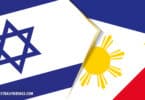The Philippines is a land of immense cultural diversity, with its history shaped by various ethnic groups that have left a lasting imprint on the nation’s identity. For genealogists, tracing ethnic roots in the Philippines offers a fascinating exploration into the rich and varied ancestry that makes up Filipino heritage.
The Indigenous Peoples: Stewards of Ancient Traditions
The Philippines is home to many indigenous groups, each with distinct languages, customs, and ways of life. These groups, such as the Igorot in the mountains of Luzon, the Lumad in Mindanao, and the Mangyan in Mindoro, have maintained their traditions over centuries despite outside influences.
Uncovering these roots for those with Indigenous ancestry can be a journey into a world where oral traditions hold the key to family history. Unlike more recent records, documentation for Indigenous groups may be limited, making it essential to connect directly with communities and learn from the stories passed down through generations.
Discovering Indigenous Ancestry:
1. Oral Histories: Indigenous cultures in the Philippines often place great importance on oral histories. If your family has indigenous roots, speaking with elders in the community can provide invaluable insights into your ancestry and cultural background.
2. Cultural Preservation Organizations: Many organizations are dedicated to preserving the traditions and histories of indigenous groups. They often have resources or connections that can assist you in tracing your lineage.
3. Visiting Ancestral Lands: Traveling to the regions where your ancestors lived can deepen your understanding of their lives and traditions. Engaging with local communities allows you to witness the practices and customs that have been handed down through generations.Chinese Influence: A Story of Integration and Legacy
The Chinese have a long history in the Philippines, dating back to pre-colonial times when trade routes brought Chinese merchants to the islands. Over centuries, many Chinese immigrants settled in the Philippines, integrating into local society while maintaining their own cultural practices. The result is a vibrant Chinese-Filipino community known as the “Tsinoy.”
If you have Chinese-Filipino ancestry, tracing this heritage can reveal connections to one of the most influential groups in Philippine history. From contributions to commerce and trade to the blending of traditions, the Chinese influence is woven into the fabric of Filipino society.
Researching Chinese Ancestry:
1. Chinese Surnames: Start by researching your family’s Chinese surname. Many Chinese-Filipino families retain their ancestral surnames, which can be traced back to specific regions in China. Understanding the history of your surname can provide clues about your ancestral origins.
2. Clan Associations: Chinese-Filipino communities often have clan associations that preserve family records and genealogies. These associations can be a valuable resource for connecting with relatives and uncovering family history.
3. Historical Documents: Documents such as marriage contracts, business records, and immigration papers can also offer insights into your Chinese ancestry. These records may be available through local archives, libraries, or family collections.Spanish Influence: Shaping Filipino Identity
The Spanish colonization of the Philippines left a profound impact on the country’s culture and identity. From language and religion to art and architecture, the influence of Spain is evident across the archipelago. For many Filipinos, Spanish ancestry is a significant part of their heritage, often reflected in surnames, traditions, and family histories.
Tracing Spanish roots in the Philippines involves exploring the historical context of Spanish colonization and understanding how it shaped the lives of your ancestors.
Exploring Spanish Ancestry:
1. Spanish Surnames: Many Filipinos have Spanish surnames, a legacy of the Clavería decree in 1849, which required Filipino families to adopt standardized surnames. Researching your surname can provide insights into your family’s history during the Spanish period.
2. Church Records: The Catholic Church played a central role in Spanish colonial life, and church records are a rich source of genealogical information. Baptismal, marriage, and death records often include detailed information about family members.
3. Spanish Colonial Documents: Documents from the Spanish colonial government, such as land titles, census records, and legal papers, can offer valuable information about your ancestors’ lives during the Spanish era.Tracing Other Ethnic Influences: A Multifaceted Heritage
The Philippines’ location at the crossroads of Asia and the Pacific has made it a melting pot of cultures. Aside from indigenous, Chinese, and Spanish influences, other ethnic groups, such as the Japanese, Indian, and Arab traders, have also left their mark on Filipino heritage. Tracing these diverse influences can add layers of richness to your family history.
Uncovering Other Ethnic Roots:
1. Japanese-Filipino Connections: Japanese migration to the Philippines has a long history, particularly during the pre-war and World War II periods. Tracing Japanese-Filipino ancestry may involve exploring military records, immigration documents, and community archives.
2. Indian Ancestry: Indian influence in the Philippines is seen in language, religion, and customs, especially in areas like Mindanao. Researching Indian roots may involve exploring ancient trade routes and historical connections between India and the Philippines.
3. Arab and Persian Traders: Arab and Persian traders established connections with the Philippines long before Spanish colonization, bringing Islam and new cultural practices to the islands. Tracing these roots may involve studying the spread of Islam in the Philippines and the history of trade in the region.Celebrating a Rich Heritage
The Philippines’ diverse ethnic heritage offers a fascinating journey for genealogists. Whether you are tracing indigenous roots, exploring Chinese or Spanish ancestry, or uncovering other ethnic influences, each discovery adds to the rich mosaic that is Filipino identity. By delving into the stories of these various groups, you connect with your own history and gain a deeper appreciation for the complexity and beauty of Filipino heritage.
As you continue your genealogical journey, remember that every record, story, and tradition is part of your family’s legacy. Embrace the diversity of your roots, and celebrate the unique heritage that makes your family’s story unique.
Read More:
- “Barangay: Sixteenth-Century Philippine Culture and Society” by William Henry Scott
- “Chinese in the Philippine Economy: Globalization and Social Mobility” by Teresita Ang See
- “The Philippines Under Spain: A Compilation and Translation of Original Documents” edited by Virginia Benitez Licuanan and Jose Llavador Mira
- “The Philippines: A Unique Nation” by Sonia M. Zaide
- “Roots of Conflict: Muslim, Christians, and the Mindanao Struggle” by Salah Jubair






